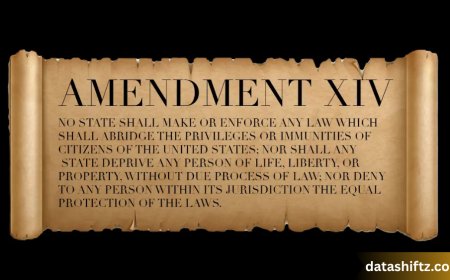25th Amendment: Understanding Presidential Succession and Disability

Introduction
The 25th Amendment to the United States Constitution is a critical provision that governs presidential succession and addresses situations in which a president is unable to fulfill their duties. Ratified in 1967, the amendment was created in response to ambiguities in the Constitution regarding presidential incapacity and succession, particularly highlighted by historical events such as the assassination of President John F. Kennedy.
This article explores the history, sections, procedures, and significance of the 25th Amendment, while providing a detailed analysis of its application in modern politics.
History and Background
Before the 25th Amendment, the Constitution provided minimal guidance on presidential incapacity. The succession line was vaguely defined, and procedures for handling a temporarily or permanently disabled president were unclear.
Key events that highlighted the need for the amendment include:
-
Assassination of President Kennedy (1963): Raised questions about the transfer of power to the vice president.
-
Presidential Health Issues: Presidents such as Woodrow Wilson and Dwight D. Eisenhower had periods of incapacitation that underscored the absence of clear protocols.
As a result, Congress proposed the 25th Amendment to provide a legal framework for presidential succession and disability, ensuring continuity of government and stability.
Sections of the 25th Amendment
The 25th Amendment is divided into four sections, each addressing specific scenarios:
Presidential Succession
This section clarifies that if the president dies, resigns, or is removed, the vice president immediately assumes the presidency. This provision ensures a seamless transfer of executive power.
Vice Presidential Vacancy
If the office of vice president becomes vacant, the president nominates a new vice president, who must be confirmed by a majority vote in both houses of Congress. This process maintains the balance of executive leadership.
Presidential Disability (Voluntary)
A president may voluntarily declare themselves unable to perform duties, transmitting a written statement to the President pro tempore of the Senate and the Speaker of the House. During this period, the vice president serves as acting president until the president declares themselves fit to resume duties.
Section 4: Presidential Disability (Involuntary)
This section addresses situations where the president is unable or unwilling to declare incapacity. The vice president and a majority of the cabinet or a body designated by Congress can declare the president incapacitated. The president may contest this declaration, but Congress ultimately decides the outcome.
Overview of the 25th Amendment Sections
| Section | Focus | Key Provisions |
|---|---|---|
| 1 | Presidential Succession | Vice president becomes president upon vacancy |
| 2 | Vice Presidential Vacancy | President nominates VP; Congress confirms |
| 3 | Voluntary Presidential Disability | President declares inability; VP becomes acting president |
| 4 | Involuntary Presidential Disability | VP & majority of cabinet can declare incapacity; Congress decides |
Historical Applications
While the 25th Amendment has rarely been invoked, it has played a crucial role in maintaining governmental stability.
Section 1 Applications
-
Used in routine successions, such as when a vice president assumes the presidency after the death or resignation of a president.
Section 2 Applications
-
Gerald Ford’s nomination of Nelson Rockefeller as vice president in 1974 utilized Section 2 after Ford became president following Nixon’s resignation.
Section 3 Applications
-
Presidents have temporarily invoked Section 3 during medical procedures requiring anesthesia, such as:
-
Ronald Reagan (1985): During surgery for colon cancer.
-
George W. Bush (2002 & 2007): During colonoscopies.
-
Section 4 Applications
-
Section 4 has never been invoked but remains an essential safeguard for situations where a president is incapacitated without voluntary declaration.
Importance of the 25th Amendment
The 25th Amendment provides critical benefits for the U.S. political system:
-
Ensures Continuity of Government: Prevents power vacuums during presidential incapacitation.
-
Clarifies Presidential Succession: Removes ambiguity in the line of succession.
-
Protects National Security: Ensures executive leadership during crises.
-
Balances Power: Involves both the executive and legislative branches in resolving disputes over presidential incapacity.
-
Maintains Public Confidence: Reassures citizens and international allies of stable governance.
Key Takeaways About the 25th Amendment
-
Ratified in 1967 to address gaps in presidential succession and disability.
-
Four sections cover succession, VP vacancy, voluntary and involuntary disability.
-
Section 1: VP becomes president if the office is vacated.
-
Section 2: President nominates a new VP, confirmed by Congress.
-
Section 3: President voluntarily declares inability; VP serves temporarily.
-
Section 4: VP and cabinet can declare presidential incapacity; Congress decides disputes.
-
Rarely invoked, but provides legal clarity in critical moments.
-
Applies during medical procedures, crises, or incapacitation.
-
Strengthens executive stability and continuity in government.
-
Acts as a safeguard for both domestic and international confidence in leadership.
Modern Relevance
The 25th Amendment continues to hold relevance in contemporary politics. It provides a framework for handling scenarios such as:
-
Presidential health emergencies.
-
Political crises that render the president unable to perform duties.
-
Situations where temporary or permanent transfer of power is necessary.
Its inclusion ensures that the United States government remains functional and resilient, even in unprecedented circumstances.
Conclusion
The 25th Amendment is a cornerstone of American constitutional law, ensuring clear procedures for presidential succession and addressing scenarios of incapacity. From voluntary medical declarations to the potential involuntary removal of a president from office, the amendment safeguards continuity, stability, and public confidence in the executive branch.
By clarifying succession, empowering the vice president, and involving Congress in critical decisions, the 25th Amendment strengthens the resilience of U.S. governance. It remains as relevant today as it was during its ratification, reflecting the foresight of lawmakers in preparing for unforeseen presidential emergencies.






























